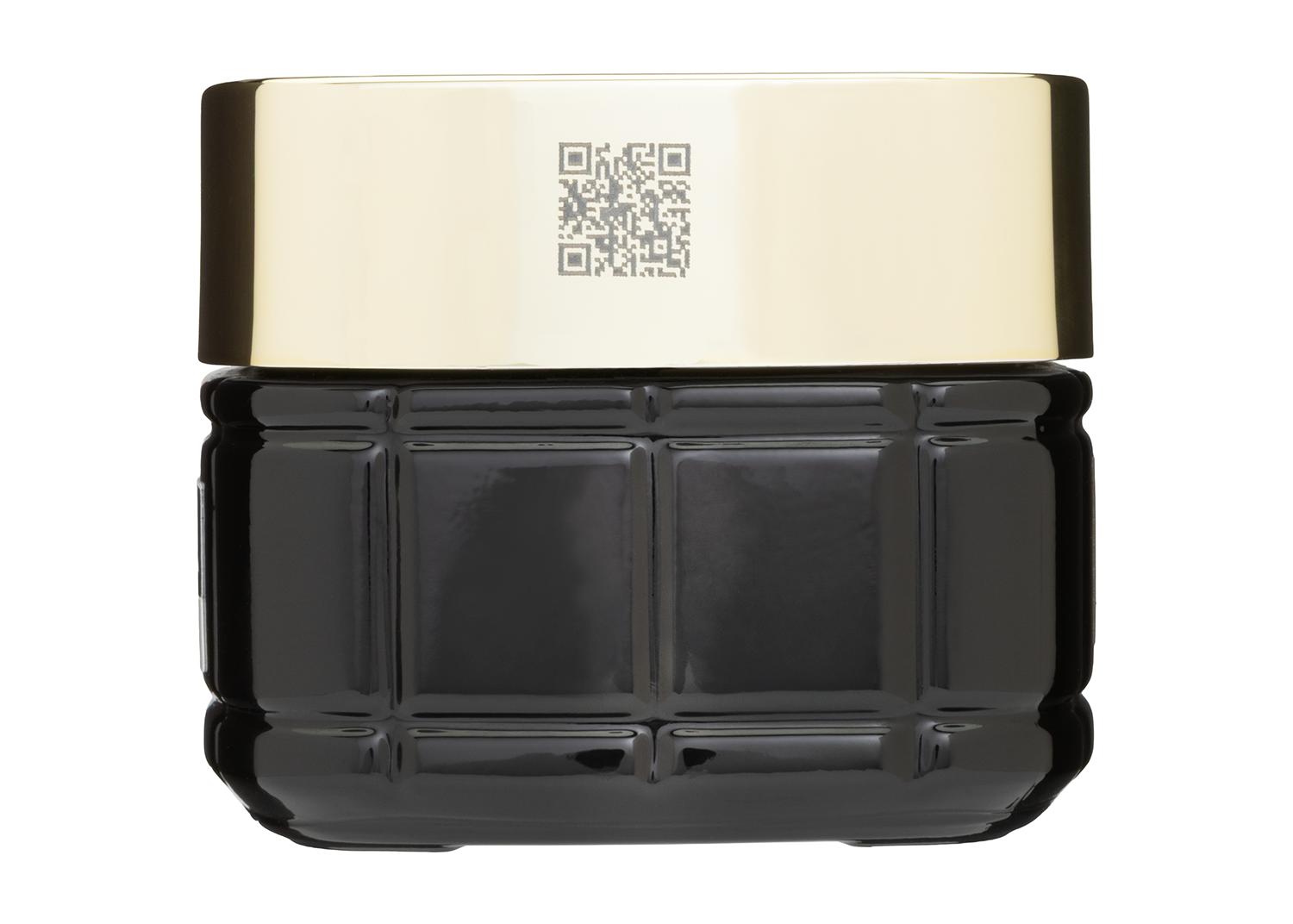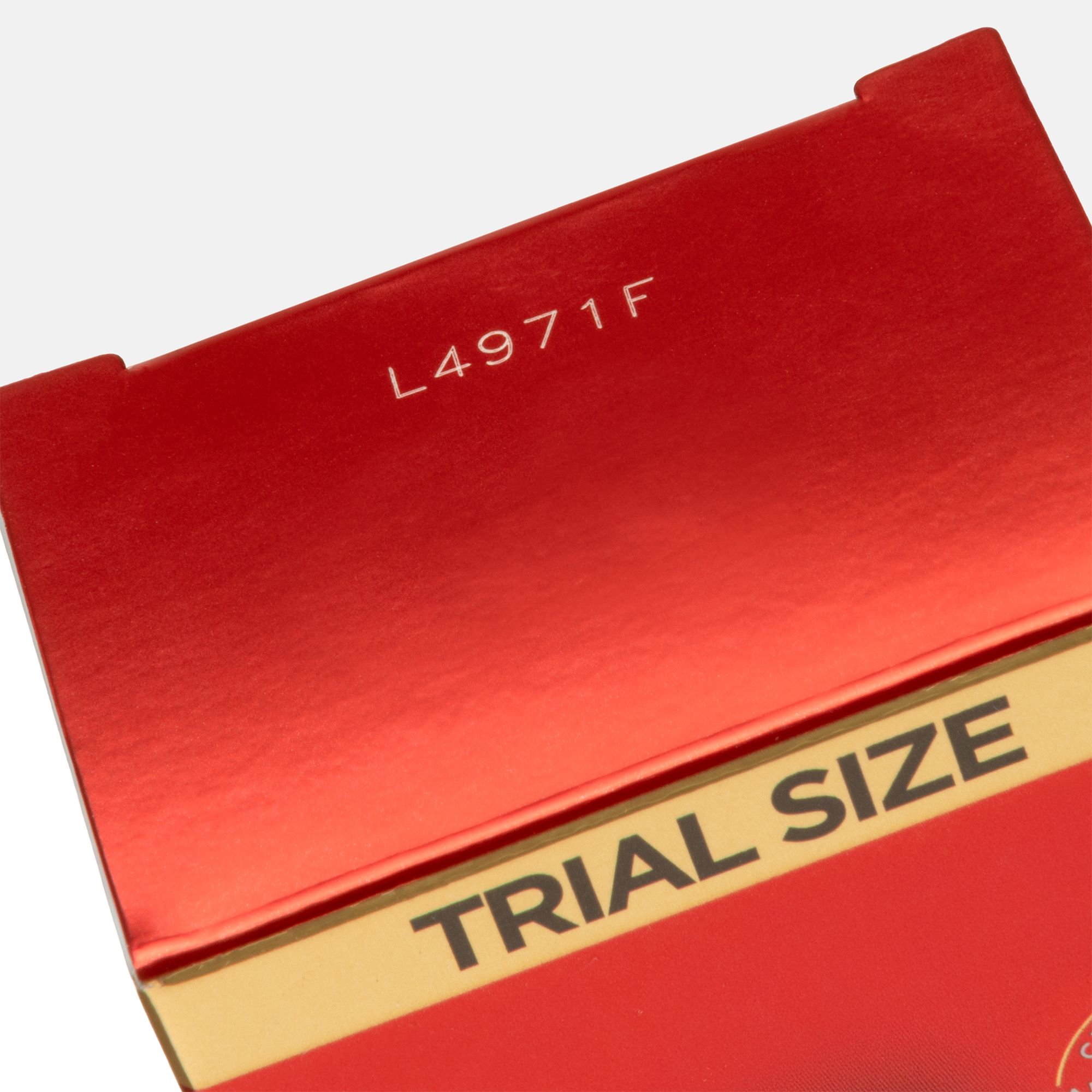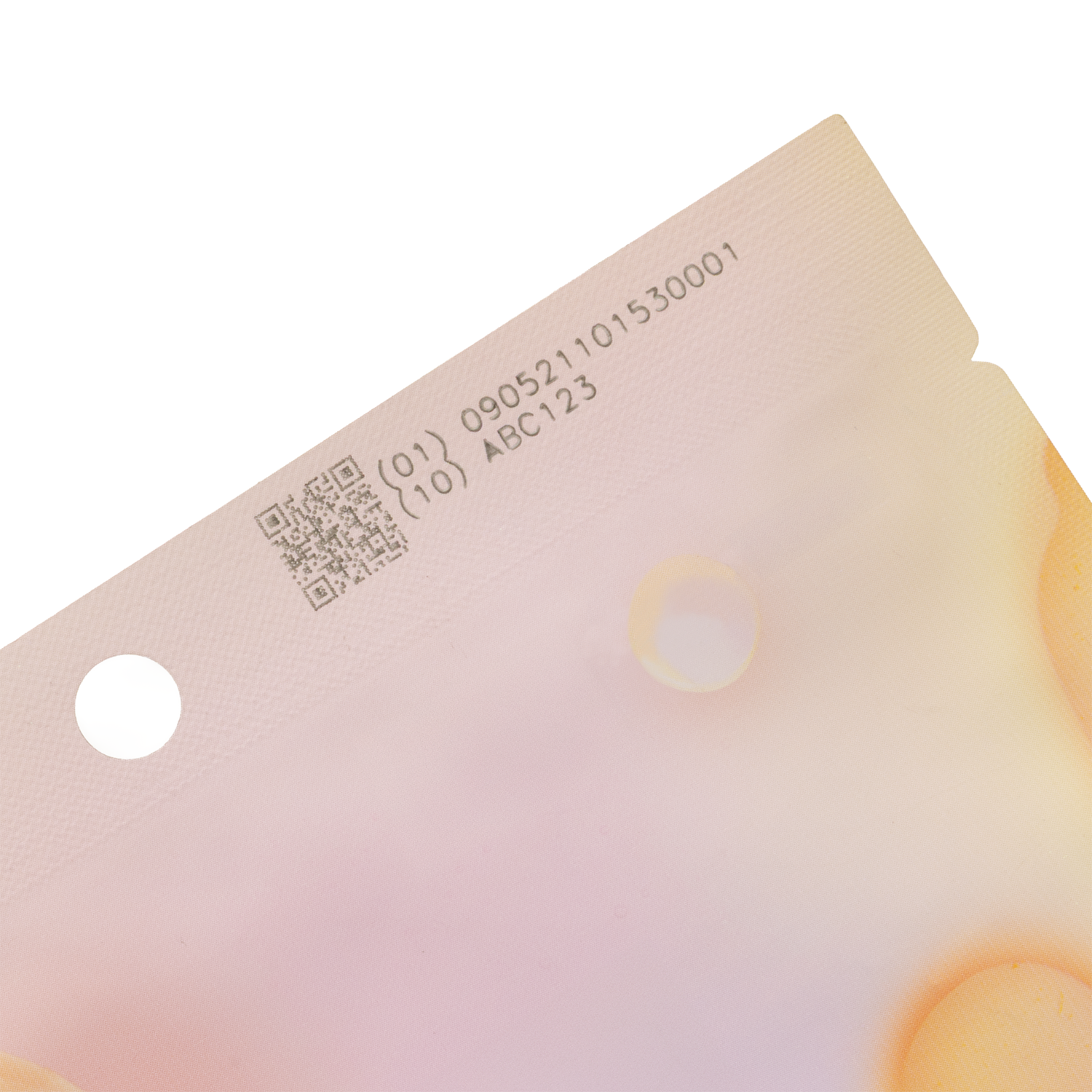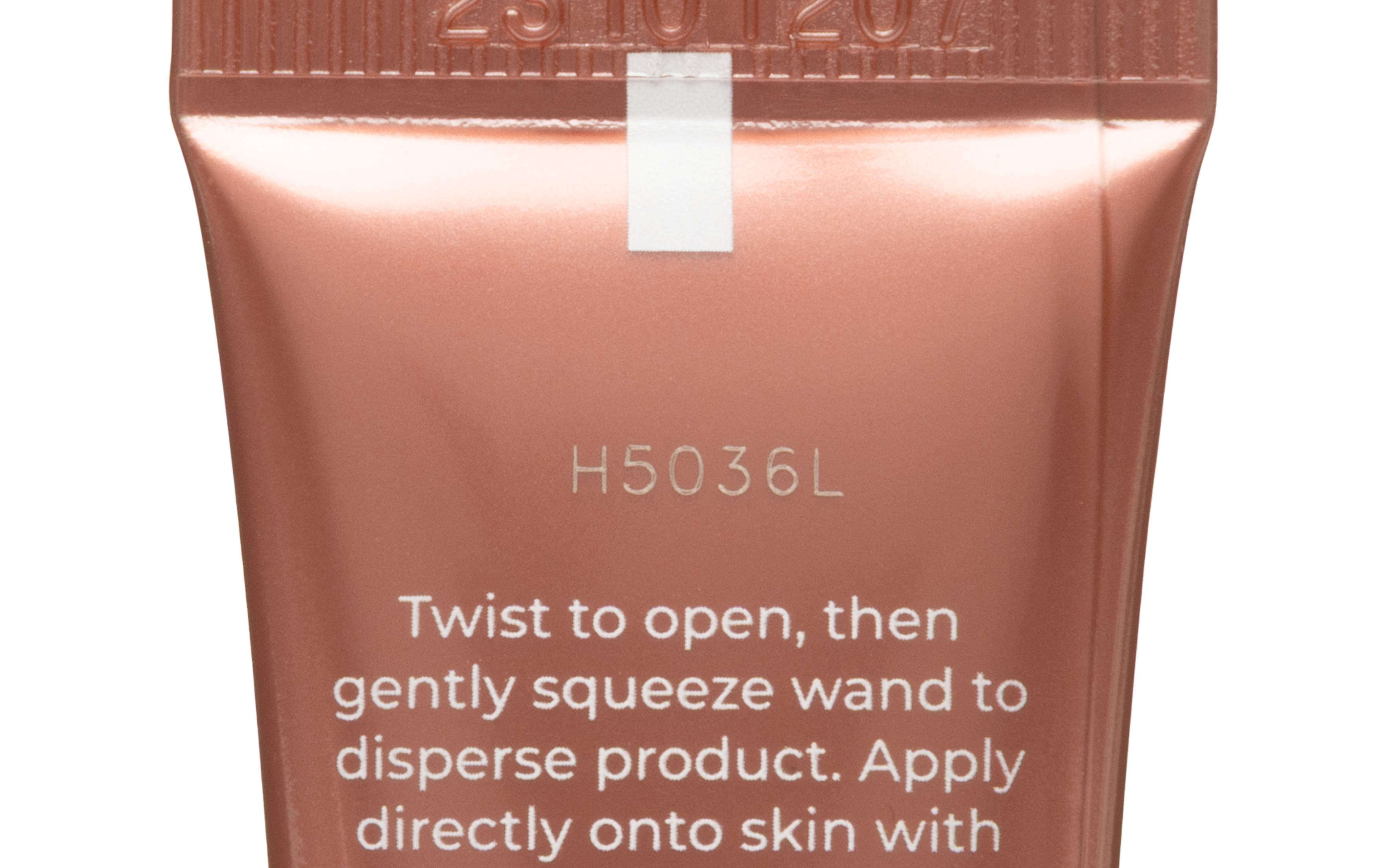
In the cosmetics industry, a fundamental principle prevails: image is everything! From the shelf to the unboxing moment, every detail—spanning the packaging’s design to lot code placement—shapes how customers experience your brand. And in this world, there are no second chances. Packaging must look flawless, stay intact, and communicate trust, right down to the smallest printed code.
UV lasers are a game changer for cosmetic brands
While many of the graphics, text, and barcodes on cosmetics packaging are pre-printed, there is often a need to add variable information during packaging. This includes date and lot codes, as well as 2D barcodes, which are essential for brands following GS1’s Sunrise 2027 guidance and aligning with certain regulations.
This is where UV laser marking is making an impact.

In addition to being of very high quality, marks produced by UV lasers are permanent, making unauthorized removal or alteration virtually impossible—a critical requirement for a brand protection strategy.
What makes UV lasers different?
Like CO₂ and fibre lasers, UV lasers produce permanent marks without inks or other fluids. But the difference lies in the wavelength and what it unlocks.
UV lasers have an advantage for marking cosmetics packaging because they can produce high-contrast marks with exceptional quality on many types of plastic packaging, some of which do not respond well to CO₂ or fibre laser light.
- UV lasers operate at 355 nm, compared to CO₂’s 10,600 nm and fibre’s 1,064 nm.
- This shorter wavelength means minimal heat, which makes UV technology ideal for delicate materials.
- The UV laser’s light is easily absorbed into many substrates, often inducing a chemical change that produces a high-contrast mark with minimal heat impact.
- A typical UV laser runs at just 3 – 5 Watts, 10x less than many CO₂ systems.

Lower power. Cooler process. Cleaner codes.
The result? UV lasers make crisp marks on materials like flexible film, white HDPE, glass, and even luxury wood and metal—without warping, cracking, or smudging.
UV laser marking systems can produce a colour change on many materials, including ridged HDPE containers, monolayer plastics and films, and glass containers. In some cases, UV lasers can produce a colour change that CO₂ and fibre lasers cannot, marking clear and high-contrast codes.
Packaging materials receptive to UV laser marking
When 2D barcodes are required, including GS1 DataMatrix and QR codes® with Digital Link, UV lasers can meet the quality standard for scannability with appropriate testing.

Plastic film
UV lasers create high-quality, permanent marks on plastic packaging without compromising design or branding.
- They integrate seamlessly into most flexible packaging systems.
- Unlike continuous inkjet (CIJ) printing, UV laser marks are long-lasting and durable.
- They work especially well on PET and PP packaging films.
- Operating at lower power than CO₂ lasers, UV lasers minimize the risk of damage to thin films.
Plastic containers
UV lasers are perfect for marking plastic cosmetic containers, including jars, bottles, and tubes, directly on the production line.
- UV lasers excel at marking on white HDPE and LDPE containers, which absorb UV light and undergo a chemical change to create sharp, high-contrast marks.
- This process can produce clean 2D codes, text, and graphics that look pre-printed on the product.
- With minimal heat, UV lasers can safely mark fragile containers.


Glass
UV lasers deliver high-quality marks on glass while offering a key advantage over traditional methods.
- Unlike CO₂ lasers, which can cause micro-fractures on glass due to heat, UV lasers generate less heat, reducing the risk of thermal stress.
- This process minimizes the chance of cracks, chips, and surface distortion, helping to keep the glass intact and flawless—essential for maintaining the integrity and appeal of cosmetic packaging.
Metal
UV lasers provide high-resolution marking on metal packaging made of a range of materials including aluminium, stainless steel, foil, and metalized films.


Wood
Unlike CO2 lasers, UV lasers offer a solution for permanent marking on wood packaging materials without generating excess heat or burning the surface.
UV lasers deliver without compromising design
In the beauty market, consumers demand more than just a quality product—they expect trust, transparency, and a commitment to high standards. Packaging plays a vital role in communicating these values, making clear, durable codes an essential part of the product experience. Today’s cosmetics consumers prioritize:
- Clean beauty: Products aligned with sustainability and reduced environmental impact.
- Clear sourcing: Transparency about ingredients and their origins.
- Tamper-proof packaging: Assurance that products are safe and unaltered.
- Digital traceability: Scannable 2D codes that offer details about a product’s journey and authenticity.
Marking that protects brands and builds trust
Counterfeit products and subpar packaging can damage a brand’s reputation and erode consumer trust. Permanent, high-quality codes not only serve a function but also convey professionalism and care.
UV laser systems create durable, clear codes that blend seamlessly with packaging designs, helping brands meet consumer expectations while protecting their image. Beyond compliance, these codes build trust and elevate the overall product experience.
Is a UV laser system right for your packaging?
As the gold standard for cosmetics packaging, UV laser marking systems deliver permanent, high-quality codes on a wide range of materials, meeting industry demands for durability and clarity. However, because various materials respond differently to laser light, testing is a crucial step to ensure compatibility and achieve the best results.

Partnering with an expert to evaluate your packaging materials, conduct testing, and determine the ideal solution will help ensure long-term reliability and success. With UV laser marking, your brand can set the standard for quality, trust, and sophistication in packaging.
Experience what Videojet lasers can do for your brand and operations. Request a test mark on your cosmetic packaging today.
Additional reading
Videojet 7920 UV Laser Marking System
Videojet: Trends in the Cosmetics Industry
Videojet: Meeting the regulatory requirements while helping to protect valuable cosmetic brands
QR Code is a registered trademark of DENSO WAVE INCORPORATED.
Stay ahead with real-time updates on the latest news:
